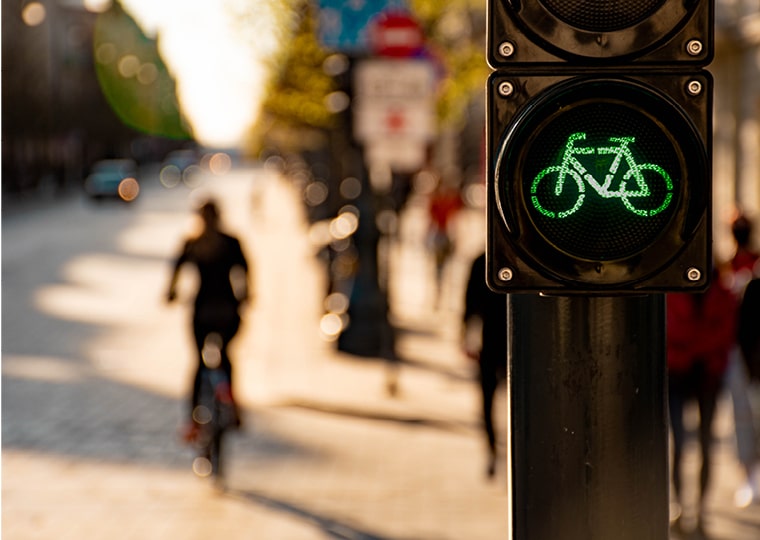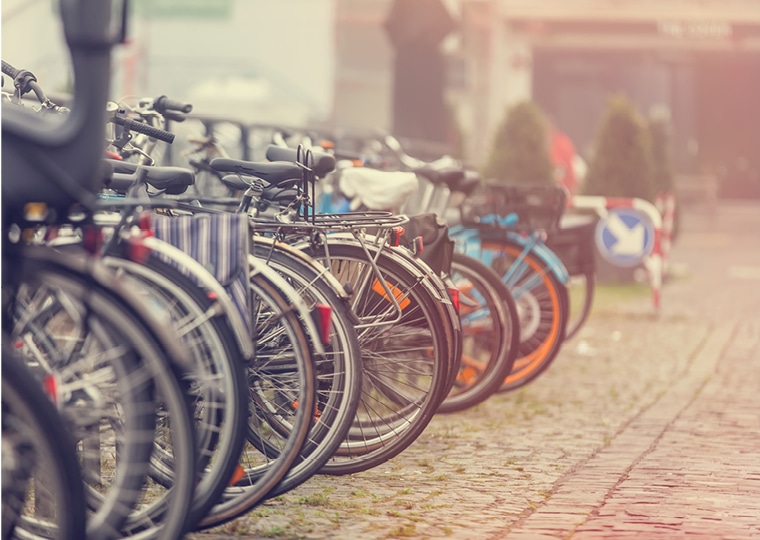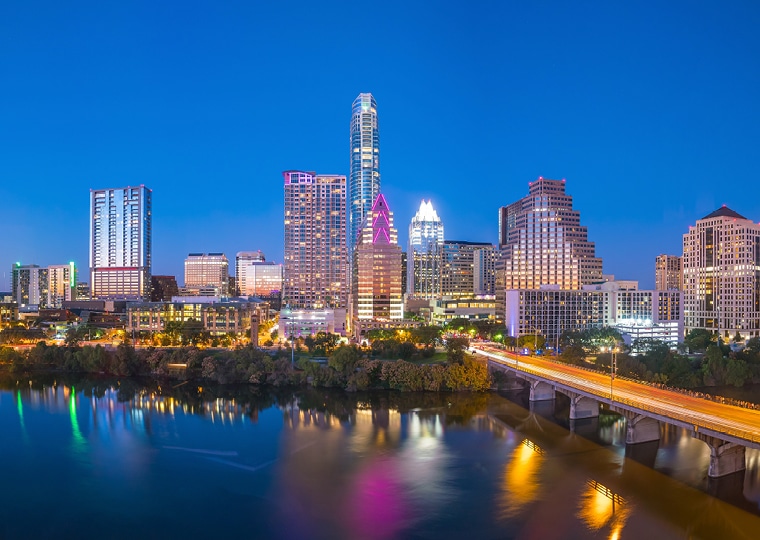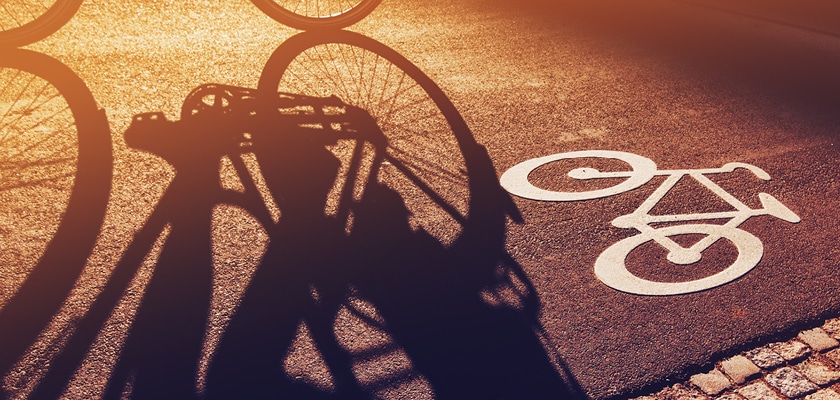
In this three-part series, Rob Spillar, STV’s Director of Smart Cities, examines the national movement to invest in smarter and safer bicycle and pedestrian infrastructure, using real-world examples to guide best practices.
In part one, Rob looked at the current cultural shift to create more innovative and safer pedestrian and bicycle infrastructure in the United States. Today, in part two, Rob highlights infrastructure examples that go beyond the bike lane and help integrate bikes into their surrounding transportation networks.
Major cities and small towns across the United States are investing in bike infrastructure – most commonly in the form of dedicated bike lanes, trails, and shared bike-auto roadways, sometimes marked using “sharrows.” While infrastructure is often designed to meet the local unique safety needs of the community, the implementer needs to be mindful of how different modes of transportation (bike, pedestrian, transit, automobiles, etc.) interact at intersections and crossings.
In Austin, TX, cyclists and pedestrians are typically allowed to share sidewalk space where the sidewalk width allows. This has led to a system where the rules of the road (or in this case, the sidewalk) are to always yield to the most vulnerable user – i.e., scooters need to yield to bikes, bikes to pedestrians, and all these modes need to yield to individuals with mobility impairments. Confident cyclists and scooter users are encouraged to use the street and bike lanes whenever possible, especially where pedestrian volumes on the sidewalk is heavy.
While effective in Austin, this approach isn’t always optimal in other municipalities, especially in cities where pedestrian volume tends to fill the available sidewalk capacity. But even in these cities, there are locations where pedestrians and cyclists must interact. In these cases, cities have invested in special designs to create a clear delineation that indicates who has the right-of-way.
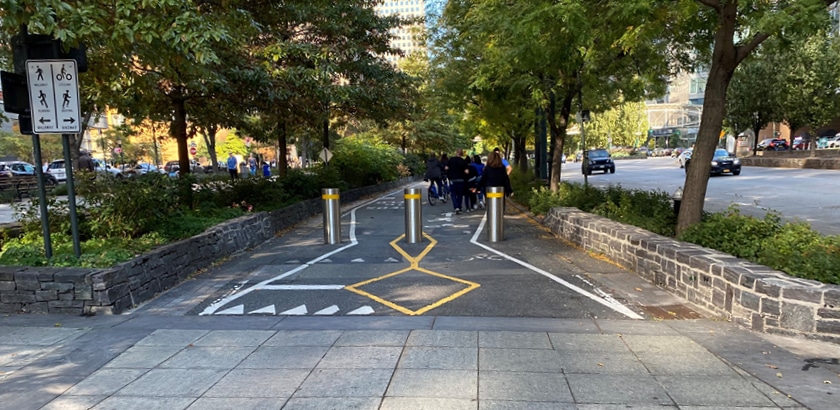
This is best evidenced in New York City’s Battery Park area, where, when riding, I saw a unique design meant to encourage cyclists to slow down as they approach a pedestrian crossing location. This design demonstrates that – just like with automobiles – when lane widths are squeezed, the result is that the peddler (or driver in terms of lanes) slows down. The addition of bollards in New York also prevents automobiles from proceeding up the bike facility and street markings give direction to the cyclists to yield upon entering the pedestrian crossflow.
Improving safety at modal intersections also includes making it easier for cyclists to follow the expected regulations – like stopping at stop signs or signals. For years, engineers have implemented auto-centric traffic designs and account for the physics of riding a bike: stop signs are on uphill slopes, and intersections feature free-right-turn lanes and sweeping radii that directly put cyclists aligned to the right of the driving lane. People also often overlook that many cyclists lock their shoes into the pedals of their bikes, making it difficult to stop in place without detaching. As a former traffic engineer, I can attest that if we better understand and provide for the needs of the bicycle, we are more likely to gain the needed behaviors we seek.
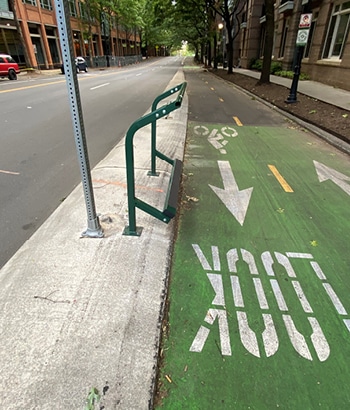
One thoughtful approach can be seen in Charlotte, NC, where handrails for cyclists to hold onto while waiting for a signal to turn are deployed. The rail allows the cyclist to stay on a bike without unclipping shoes from the bike. The use of a balance rail in this facility acknowledges the fact that a cyclist can’t stand still on just two wheels without moving.
Devices like this make it easier for cyclists to obey the traffic signal by offering assistance at critical intersections between modes. These devices represent attention to bike culture and not just the provision of bike lanes.
STV’s Smart Cities team is researching solutions like these to create more pragmatic infrastructure in communities that we advise. We seek to work with communities striving to create safer access and mobility for all users by creating a sustainable bike and pedestrian culture. We’re creating a bikeway and trail/greenway leadership team to focus on multimodal infrastructure nationally.

Have an example of smart bicycle infrastructure investment or want more information about how STV is creating Smart Cities by advising on multimodal infrastructure? Contact Rob Spillar at .
